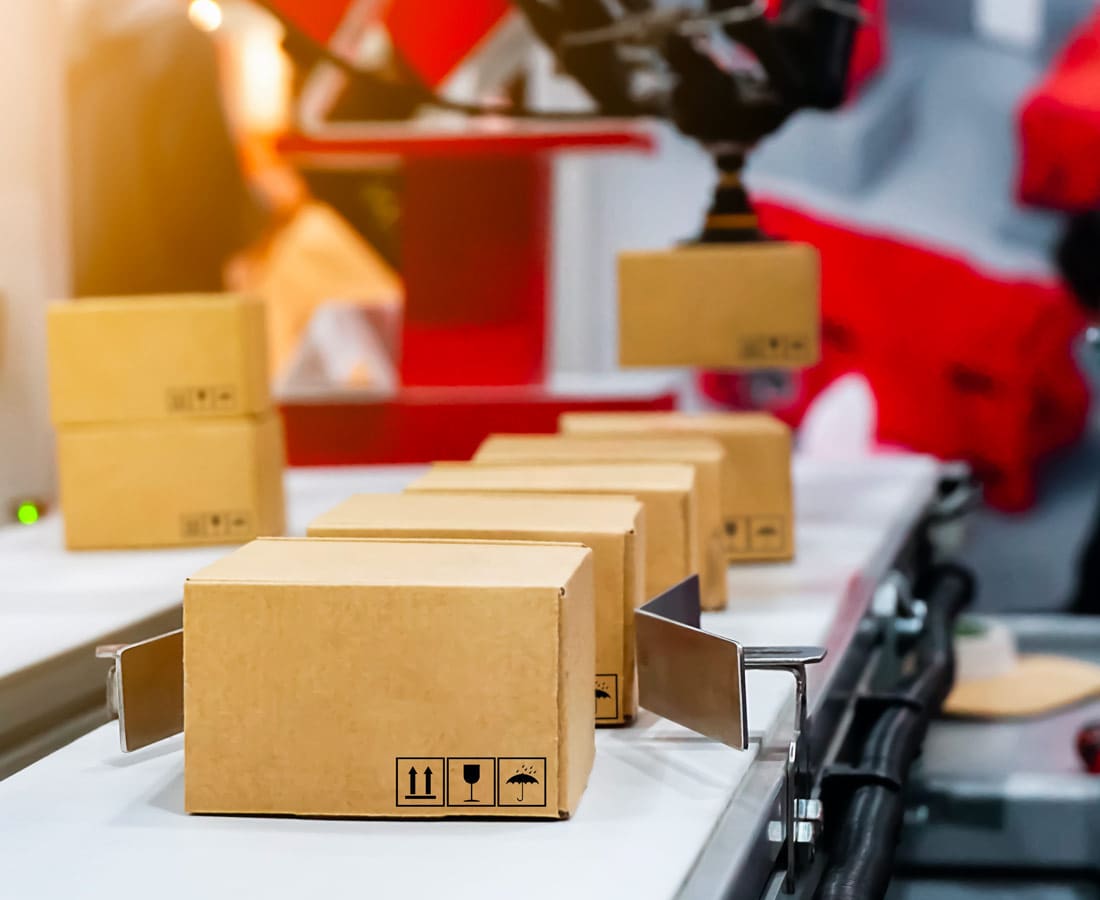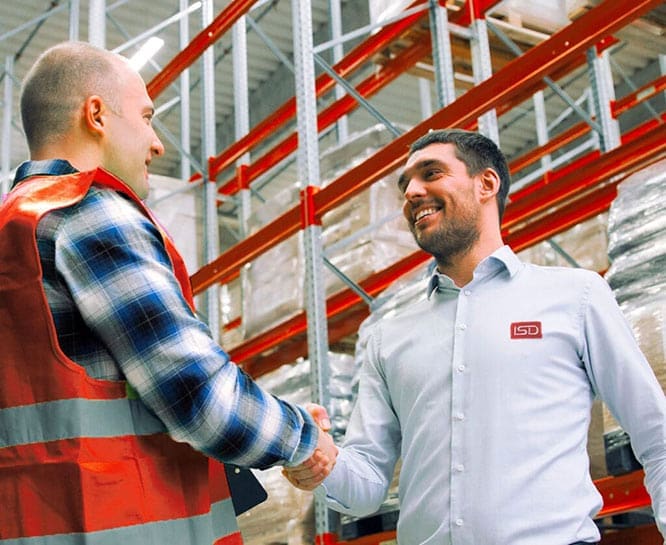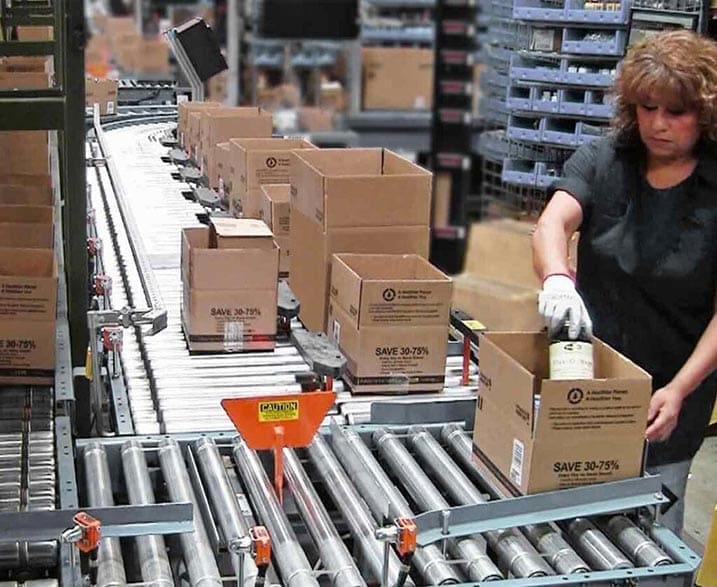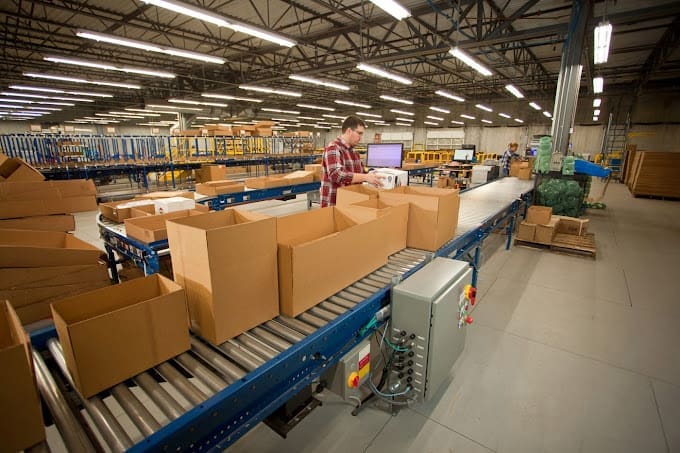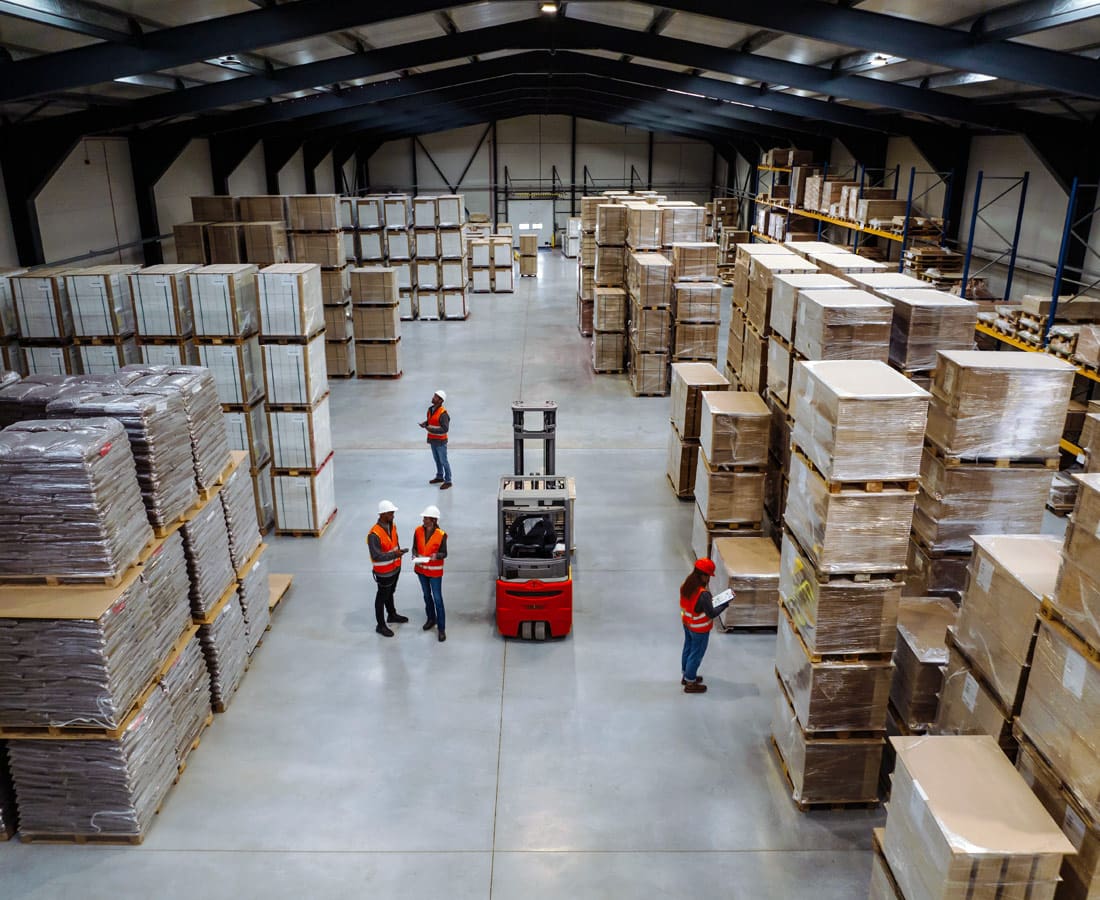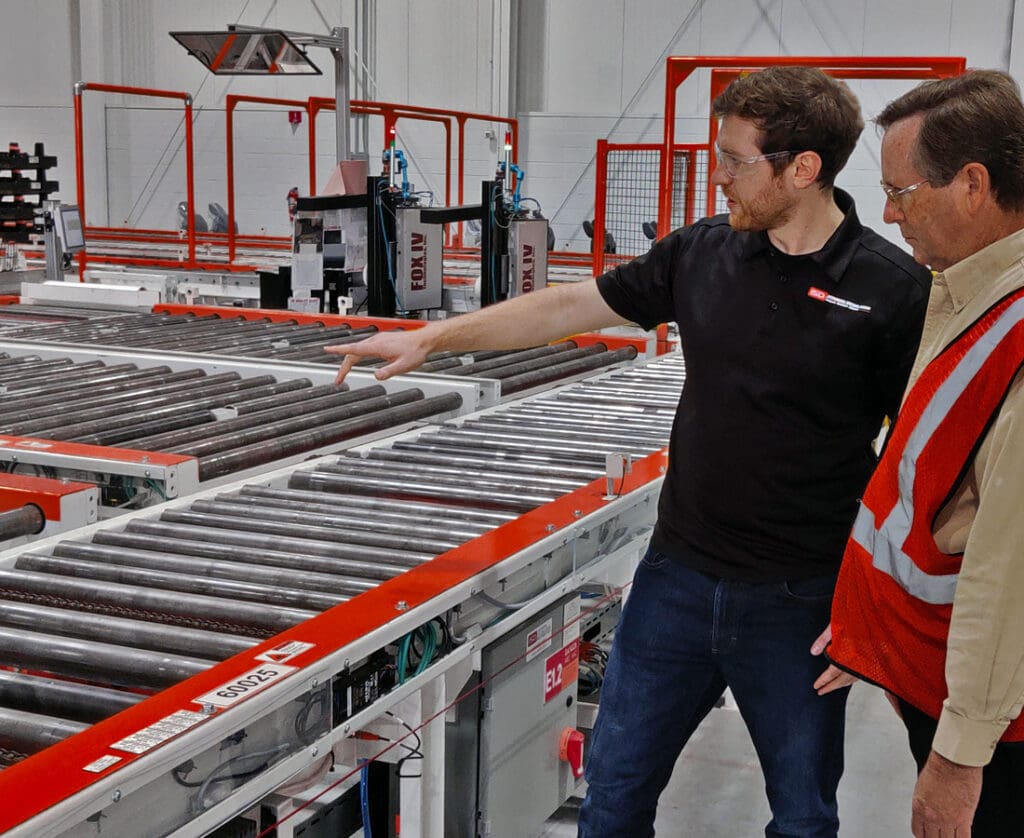When you hear “warehouse automation,” what do you think?
A team of robots zooming around inventory lanes?
A bank of monitors blinking with red, yellow, and green indicators?
A big check?
Many warehouse and distribution operations are still in the early stages of automating their work. Without a lot of first-hand experience, the idea of automation looms large. But even for operations with some advanced automation, there can be concerns that there are still so many more potential opportunities to expand or augment the automation even further.
For this short guide, we’ve interviewed two operation experts, each of whom has spent decades running and improving hundreds of warehouses, about what people think automation is — and what it really is.
After you’ve read these 10 misconceptions and explanations of what automation actually is, you’ll be:
- Better informed about what automation in a warehouse setting looks like, including different types of warehouse automation
- More prepared to define what your actual operation needs are
- Protected against making investments in technology that doesn’t really solve your real and most pressing problems
- Ready with answers to questions commonly asked by your executive staff about approaching automation projects
And if at the end, you’re still curious to understand more about automation, ISD’s automation experts are here to answer questions and help you make the shift that’s right for you.
What Automation Isn’t: Common Misconceptions
1. Automation isn’t: A one-size-fits-all solution.
2. Automation isn’t: A miracle worker.
3. Automation isn’t: Independent.
4. Automation isn’t: Only about big-ticket machinery.
6. Automation isn’t: Bad for jobs.
8. Automation isn’t: Expensive.
9. Automation isn’t: Something you have to manage alone.
10. Automation isn’t: The answer.
1. Automation isn’t: A one-size-fits-all solution.
It’s tempting to think that all of your warehouse automation needs could be solved with one product or one system. It would be nice if you could take a ready-built software, or a one-stop-shop automated system full of hardware, and see your warehouse operations immediately streamlined.
But in real life, automation solutions that are successful in the long term aren’t the one-size-fits all. When a solution sounds too good to be true, that’s usually because it is.
Tony Morgott, ISD’s VP of Sales, has worked on warehouse automation for decades. He explains it like this:
“There are hundreds of manufacturers out there, and nobody does everything extremely well. Sometimes, trying to buy from only one manufacturer is like trying to fit a square peg in the wrong hole. At ISD, we bring a rolodex of trusted partners, which buys down risk and allows us to customize solutions for each situation.”
Your business is unique — your automation should be, too.
2. Automation isn’t: A miracle worker.
Bob Jones has been in operations for longer than he cares to admit. And he was an ISD customer before he brought his expertise in-house. He’s seen a lot of automation projects go right. But he’s seen the opposite, too.
His experience has shown him that automation can’t fix everything.
“The quickest way to close a company and shutter it permanently? Think that automation will handle everything.”
For example, a warehouse that’s stocking too many products needs to right-size their procurement process and improve their inventory before they’ll get maximum benefit from an automatic storage and retrieval (ASRS) system.
Another example? When automation is implemented as an island within an operation. In cases where the WMS functionality, the upstream operations (receiving, replenishments), and the downstream operations (picking, packing, consolidating) have not been restructured and improved to integrate with automation, your operation is slowed down, not improved.
That’s why ISD starts all projects with an assessment of what’s going on at your company. If you’d like to talk to an automation expert about your warehouse’s specific situation, schedule a free consultation today. If automation’s not the best investment for your warehouse right now, we’ll tell you. If it is, we’ll guide you through every step.
3. Automation isn’t: Independent
In some operations, everything happens in idiosyncratic ways. Before automation can be implemented, processes need to be streamlined — and rules followed.
Let’s say in your distribution center, every order slip is tagged to the same packaging: a simple brown box. When orders of only small, delicate products go out, packers know to read the order slip and make the decision to pack the order in a protective bubble envelope instead.
An automated packing system can’t make that same calculation on its own.
“The golden rule is the more you automate, the more rigid the rules become,” explains Bob. “The tribal knowledge within a warehouse means nothing to automation or to process requirements.” Automation doesn’t “see” or consider things that are defined systematically.
When designing an automated process, you need to remember that you’re not designing automation itself. You’re designing a workflow. It’s a lot less about robots and a lot more about specifying inputs, decision trees, and very detailed information on products, processes, procedures, and shipping requirements.
Automation isn’t independent. But that means that automation is less overwhelming than you may have anticipated. It starts with externalizing all the decisions that you and your team know to make — and making them repeatable.
4. Automation isn’t: Only about big-ticket machinery.
How you install your automation equipment matters just as much as what you buy.
“Think about when someone builds you a house. They can use the greatest shingles, siding, and widows possible. But if they do a garbage job installing it, leaks will come through everywhere because they didn’t put it together right,” says Tony. “The way you put everything together is as important or more important than the components themselves.”
ISD works with a huge variety of products and a suite of hardware and software providers, so you’re always getting the right technology and operation experts who know how to maximize it for your warehouse. Talk to us today about how we can become your trusted partner in managing automation.
5. Automation isn’t: Smart.
It might not be what you expected, but automation really isn’t smart.
You, as a warehouse manager with lots of experience, are a much nimbler, more creative problem solver than an algorithm could be.
You and your best workers know how to solve problems live, taking in unexpected inputs and juggling different pressures.
“Automation is very efficient, but it’s very transactional,” says Bob. “Operators can manipulate, can think. Machines can just do, unless the logic for exceptions is built into the automated workflow and the automation can ‘trap’ exceptions it cannot work though.”
Understanding that helps with deciding where it makes sense to invest in automation. In an area with repetitive processes that can be managed with external logic? Automation all the way. A process that requires lots of discretion? Stick with your team for now.
For more guidance on where automation makes the most sense, download our free guide Getting Started with Warehouse Automation.
6. Automation isn’t: Bad for jobs.
There’s a belief that automation can be bad for jobs.
What it does is make jobs better.
“A manual environment is fraught with tribal knowledge. Someone new comes in and has to learn how to hand-pick 50,000 SKUs in 2.5 hours, at the required speed and efficiency? That’s a bad experience for them and ultimately, for your customers,” explains Bob.
An automated system, on the other hand, makes it easier to come in and come up the curve, as the process is truly more transactional. It creates better working conditions for workers, so that instead of running around a hot warehouse at risk of accidents with heavy machinery, they can be in a comfortable environment where orders and products come safely to them. And it allows you to compensate them more, which in turn supports their families, futures, and sense of fulfillment at work, minimizing transient labor and the exorbitant costs of churning employees through your operation.
Automation may change your labor needs. For example, instead of needing 200 temporary workers to get orders out the door each day, you might need 50 well-trained permanent workers with safe jobs and pride in their work.
“I would rather have a smaller, better-paid workforce that is not as transient, every time,” says Bob.
Questions on what jobs look like post-automation? Ask our team.
7. Automation isn’t: Static.
The demands of a distribution center have grown significantly in past years. It used to be enough to offer two-day delivery. Some customers, particularly those in urban areas, expect delivery within 24 hours, found a 2023 McKinsey report. And per Amazon, 1.5 million people try same-day delivery each month.
As needs change, your warehouse needs to, too. Automation isn’t static, and that’s a good thing. It can grow and evolve with your business.
“Some warehouses are fully automated, but most aren’t,” explains Tony. He gives an example:
- In a site where there’s a lot of manual picking because there’s a wide range of products, automation might not yet be the right answer for all picking.
- “If you think about your fingers and hand, you know how to pick up an egg differently than a rubber ball. Getting that into an automated picking system is not impossible, but it’s hard,” he says.
Instead of automating every part of the fulfillment process, you may start by looking at the bottlenecks in your system and adding automation there. For example: if orders are stacked up and waiting to be packed and manifested, you could start by adding conveyors to move orders to packers or automated labelers to speed up the shipping.
“People’s business needs change. If we start with doing one part of a process, we can expand it to take on an additional task when that’s ready,” says Tony. “In many operations, automation grows with time.”
8. Automation isn’t: Expensive.
You don’t need to invest in a complete system from the start.
There’s a common belief that to embrace automation, you need to embark on a greenfield project to build a brand-new site full of top technology.
While you certainly can start with a blank block of space and build the perfect warehouse for you, that’s not the only way to automate.
And you don’t need to buy an entire suite of solutions from any one technology provider. When you do, you end up paying for features that aren’t relevant to your operation.
“If you don’t need it, why do you want to pay for it?” asks Tony. “For instance, you might need a cut-and-dry ASRS package that can be provided very affordably, but a bigger software company might charge 4x as much for it, plus $30,000/year in maintenance and support.”
ISD is product and brand agnostic. We work with vendor partners to mix and match solutions and find what is right for your operation, so you’re never stuck with an expensive bill for technology you don’t need. And we negotiate on your behalf, acting like another member of your team. Learn more about how we partner.
9. Automation isn’t: Something you have to manage alone.
Some vendors are interested in the sale. They want to get their products into your warehouse, or installed onto your systems, and move on to the next customer.
At ISD, we’re interested in partnership.
We believe in collaborative automation. We know you’re the experts of how your business runs today, and that our team of agile engineers can design how it could run tomorrow.
We start our partnerships long before a sale.
We start with research, observing your operation and asking questions to understand how it works.
Then we collaborate with you to identify areas for improvement and calculate a fast ROI.
We build customized solutions for your needs and budget.
And we handle installation with maximum trust and efficiency. Our team works year-round, including weekends and holidays, so that you can get a new system up and running with no or minimal downtime.
Once your system is installed, we’re a phone call or a message away for maintenance, problem-solving, and updates on how it’s going.
Our job is to make your job easier, not just at the start of a new automation project but before, during, and long after it. To speak to an automation partner you can rely on, set up a free consultation.
10. Automation isn’t: The answer.
Instead, automation asks a question: Where do you want automation to take you?
“If you buy a system and try to reverse engineer it to do what you do now, because it’s comfortable and what you know, you’ll never know everything it can achieve,” says Bob.
If you’re ready to see what automation can do for you, check out the 5 Questions to Ask Yourself Before Implementing Warehouse Automation.
And if you’re looking for a partner who can help you navigate automating your warehouse, schedule a talk with one of our experts today.




